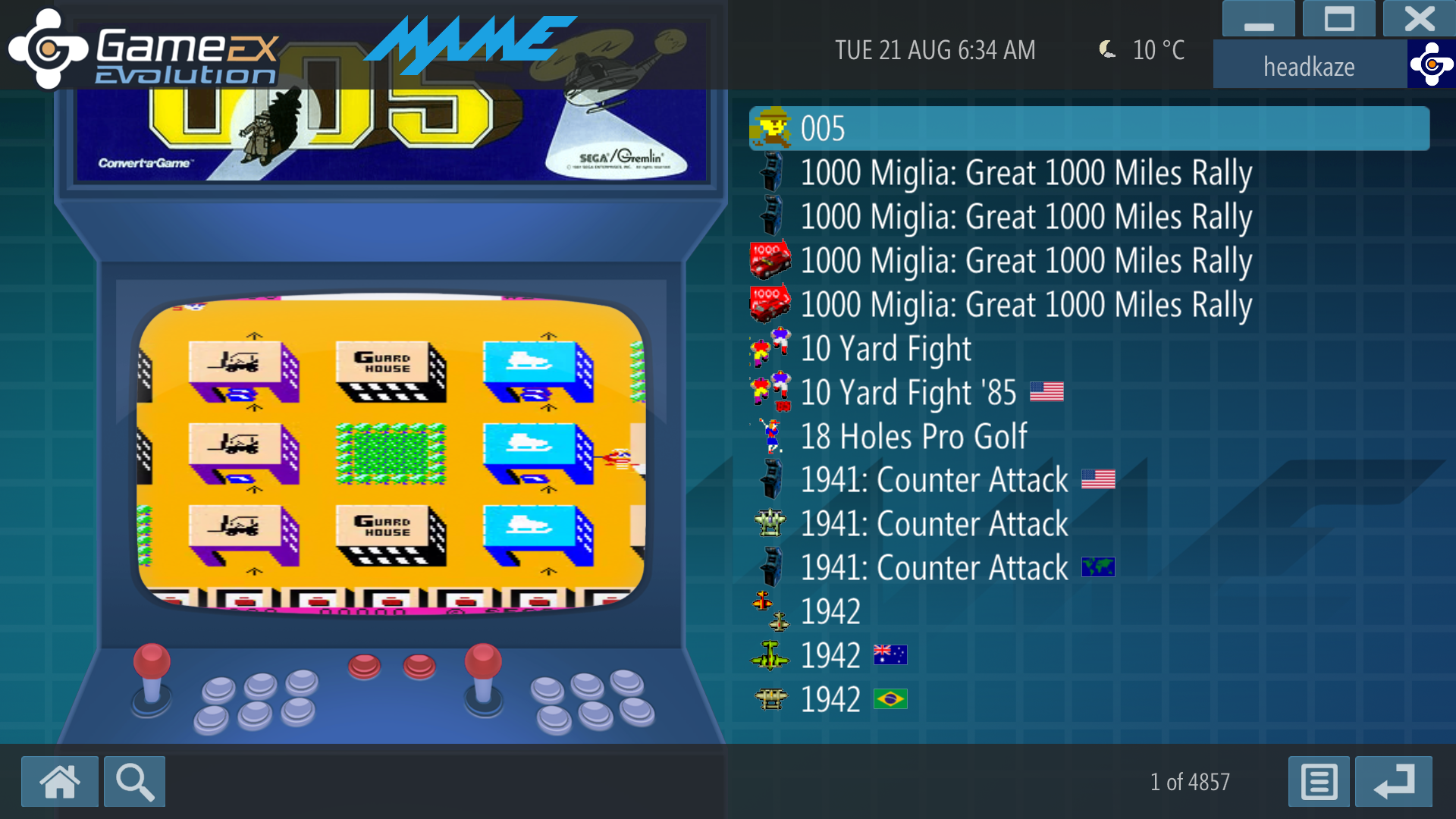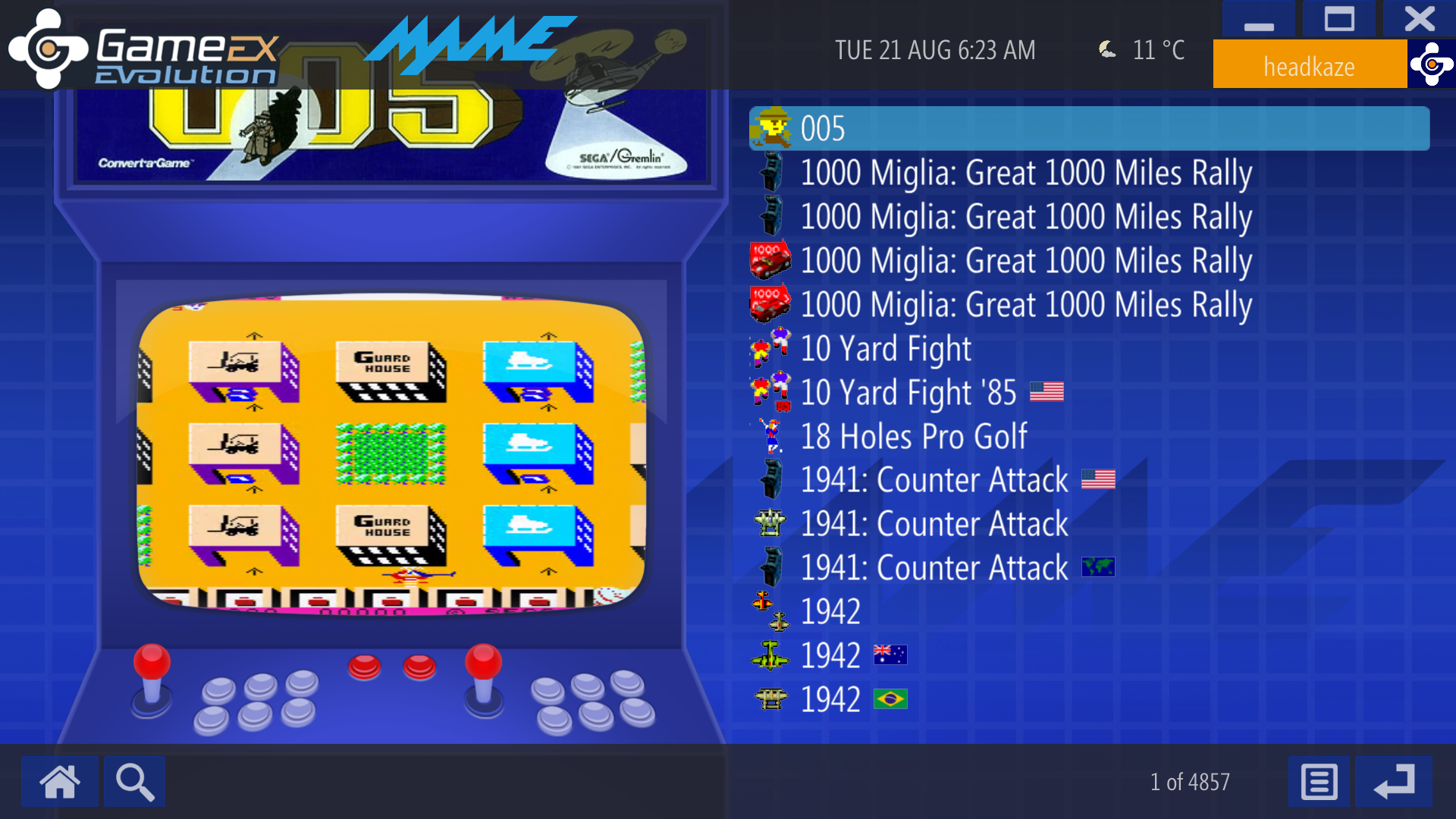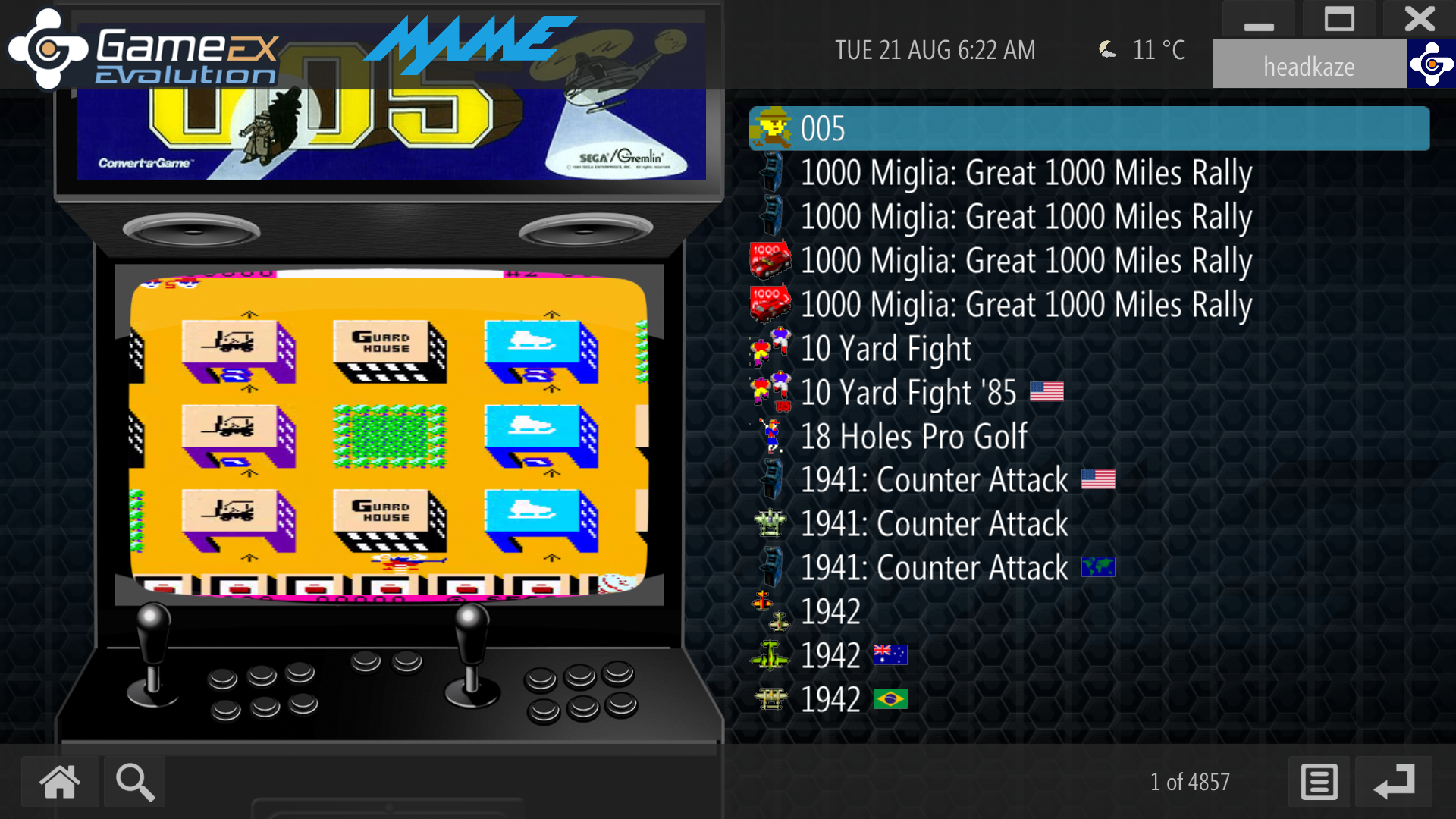I'm playing around with my iCEBreaker FPGA today. Got output to an RGB Matrix using the LED panel driver Pmod.
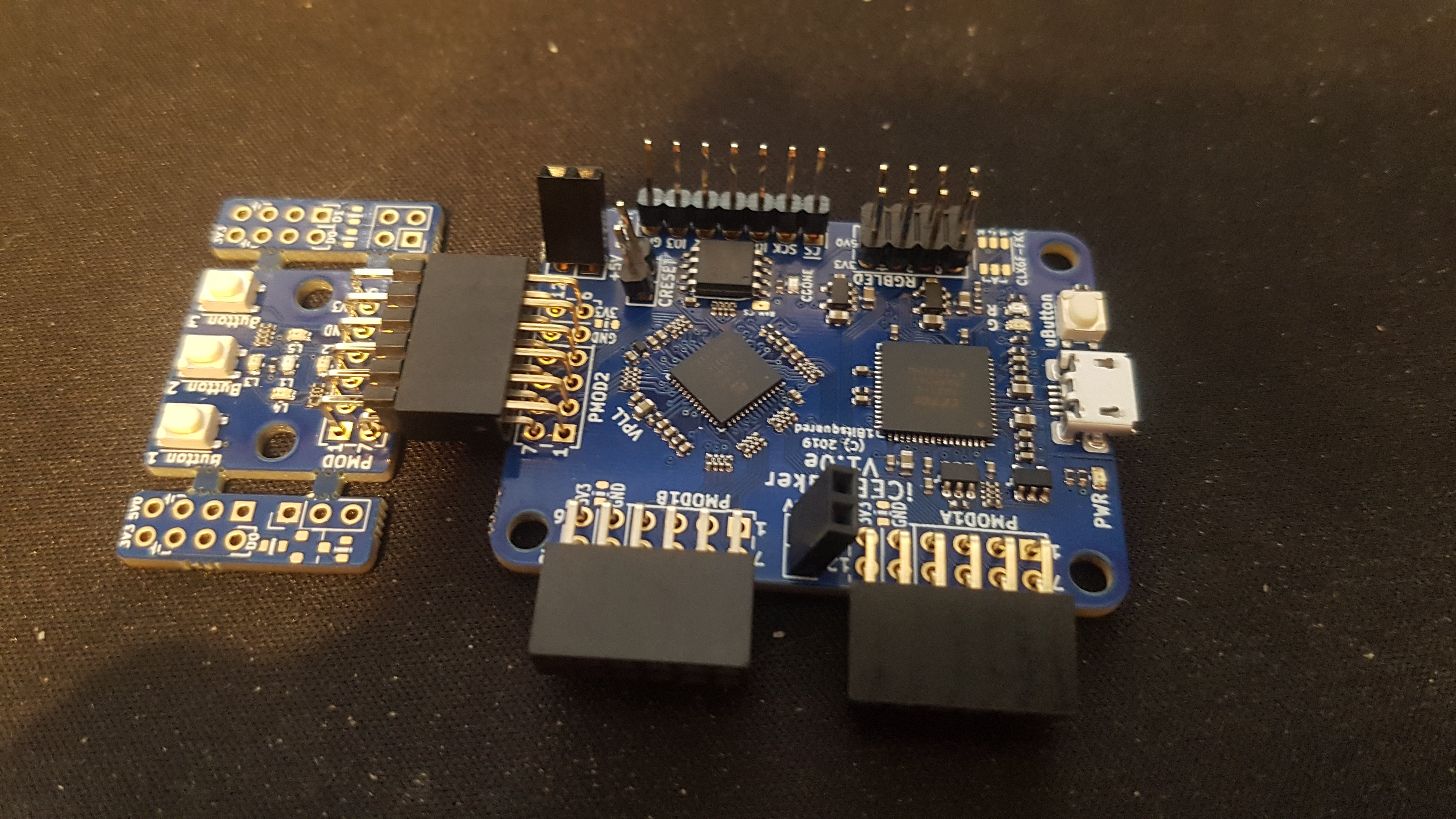
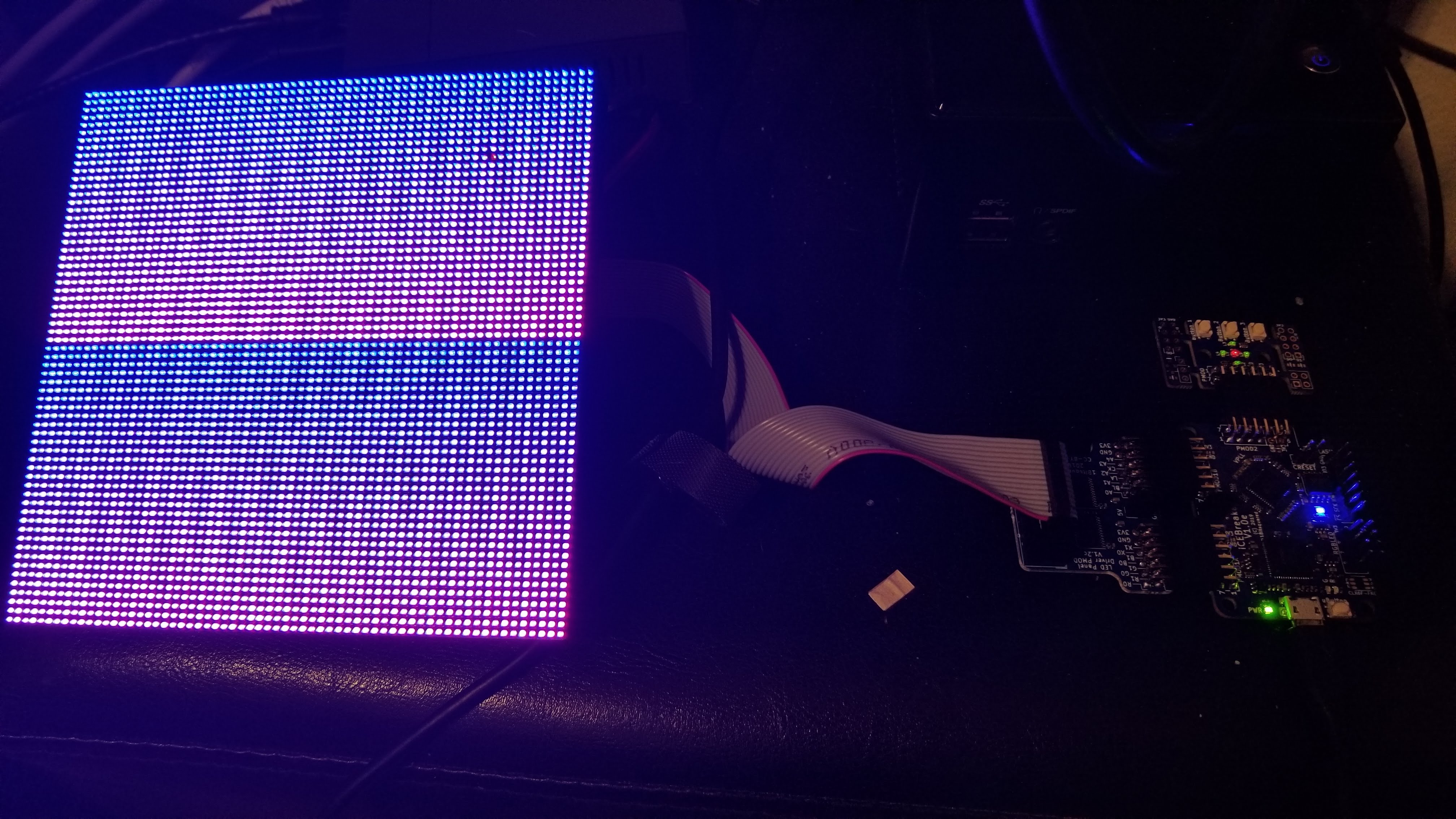
I'm playing around with my iCEBreaker FPGA today. Got output to an RGB Matrix using the LED panel driver Pmod.


I have a project in which I want to create a console in FPGA and was disappointed to find the Papillo project was pretty much dead and did not support the Xliinx 7 series. I found the Bonfire RISC-V (RV32IM) processor and decided this would be a great replacement for the ZPUino.
I recently purchased an Arty A7-35T board so I can run the Bonfire processor. I plugged in a Micro SD and USBUART Pmod. The Micro SD slot is for storing and running Lua applications and the USBUART Pmod is for debugging (more on that in another post).
I successfully flashed the bonfire_arty_rev_v1.2.0_elua_0.9.1_193-gb2bf8f8.mcs image.
The first issue I came across is the Configuration Memory Device is different on my board. Mine has a Spansion s25fl128sxxxxxx0-spi-x1_x2_x4 not a Micron mt25ql128-spi-x1_x2_x4.
The second issue I had was using minicom. I could not get any response from the board until I did the following:
So now I have successfully connected to my Arty running Bonfire processor! 😄
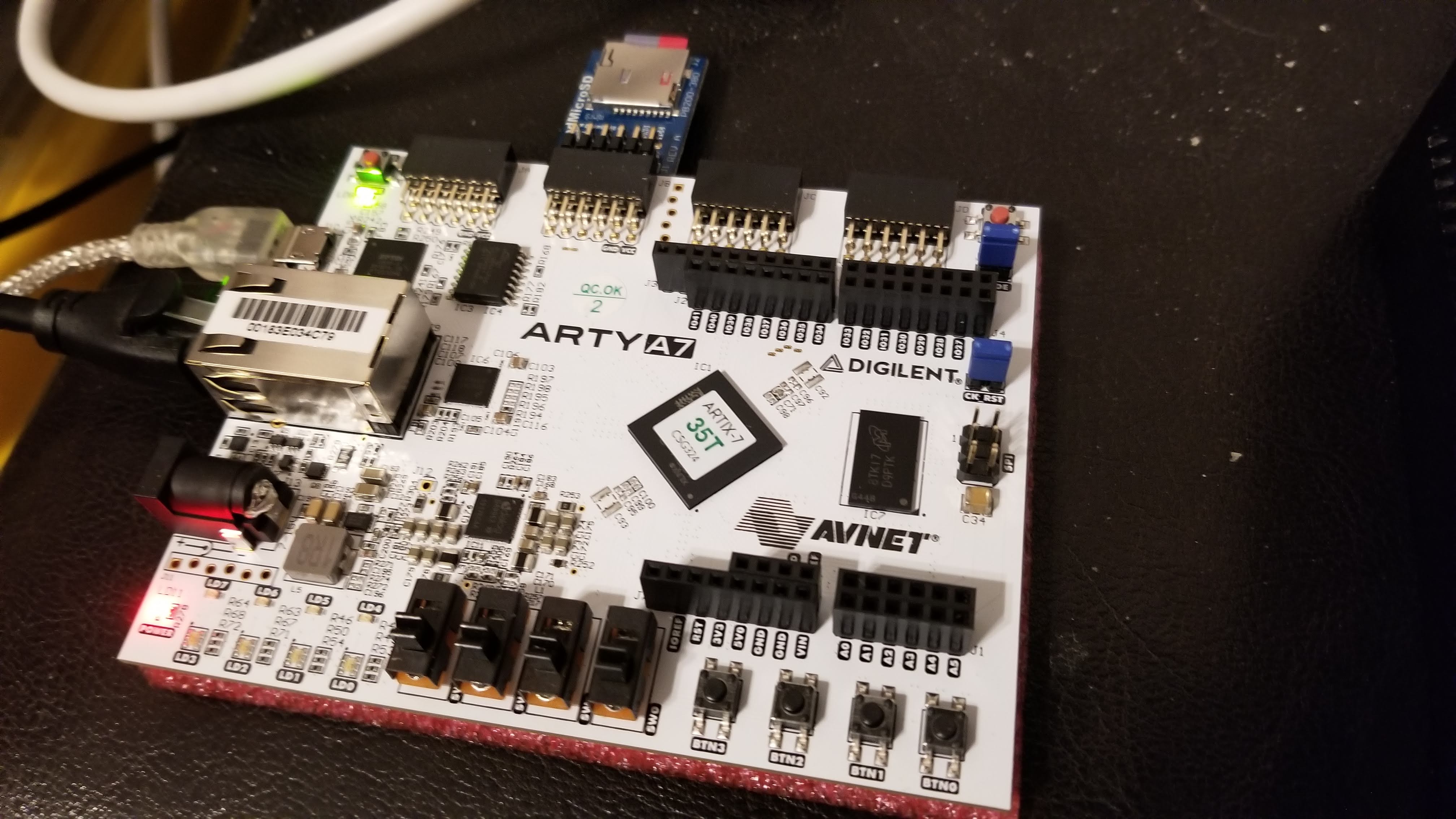
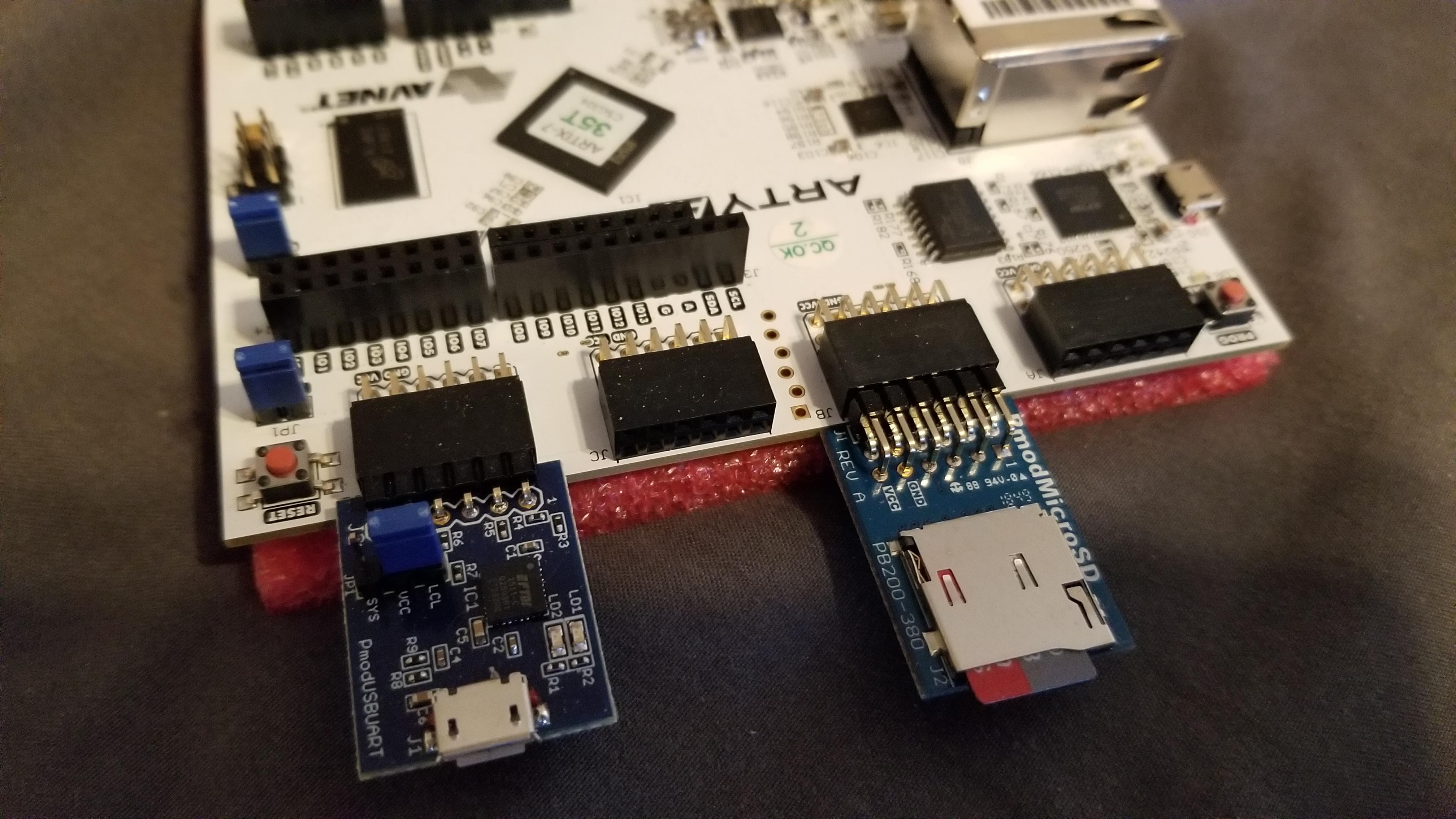
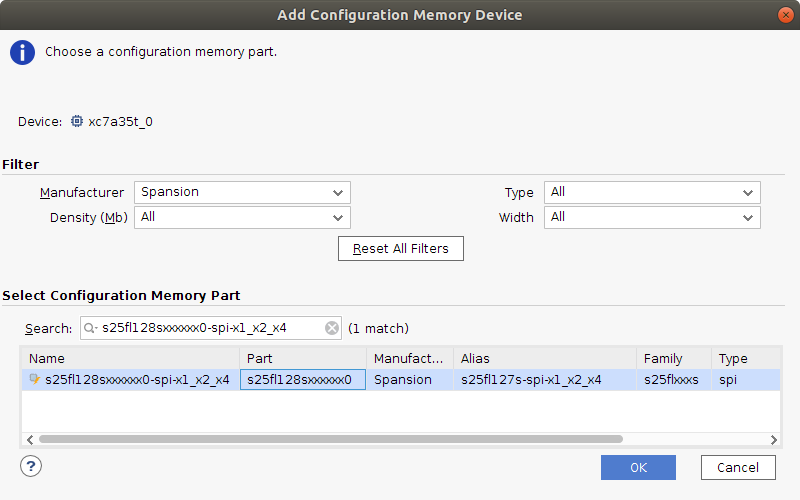


I ported the LHA Decompressor for Java library to a .NET library called LHA Decompressor.
I'm working on a PICO-8 emulator written in C# called PicoSharp.
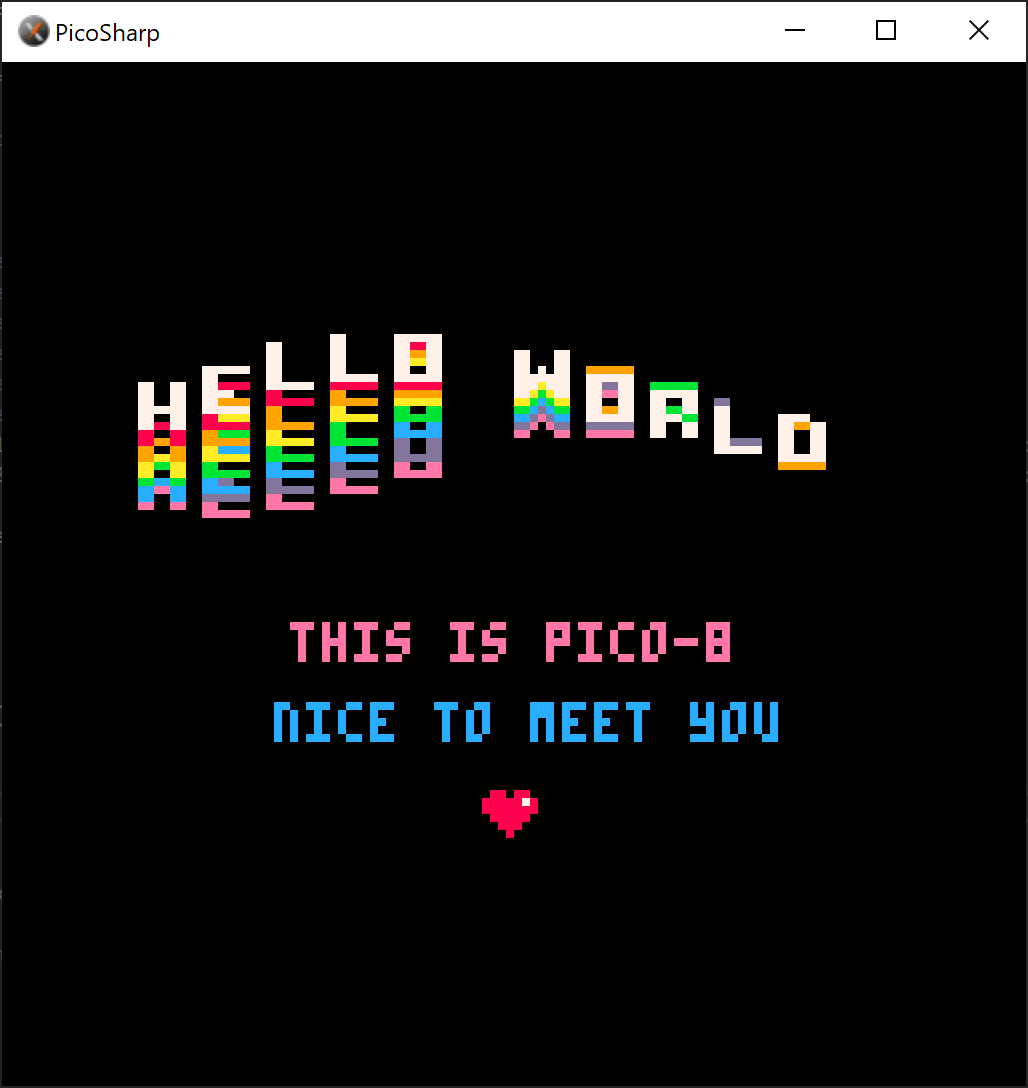
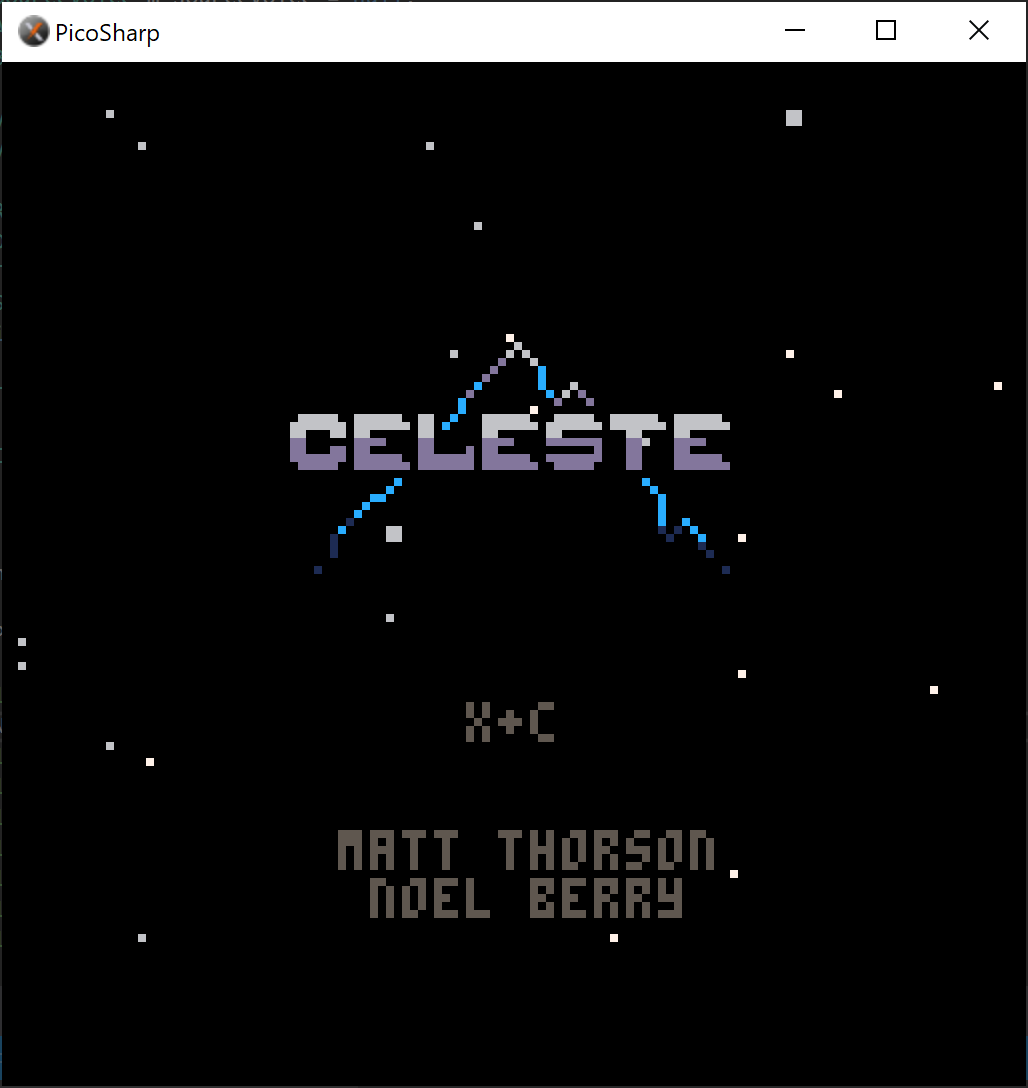

We wrote this desktop application in WPF which injects leg movement data into SteamVR or Oculus hardware.
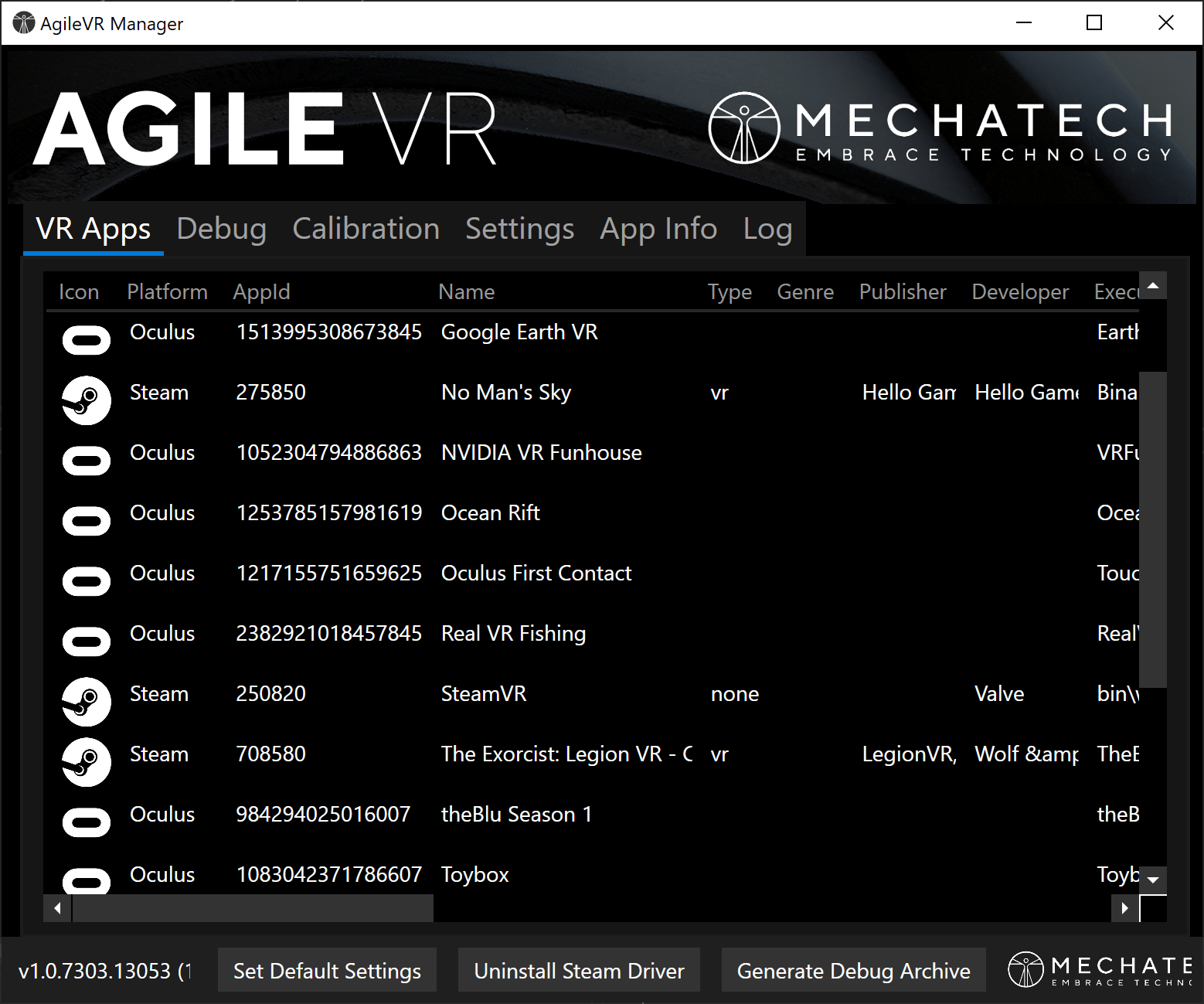
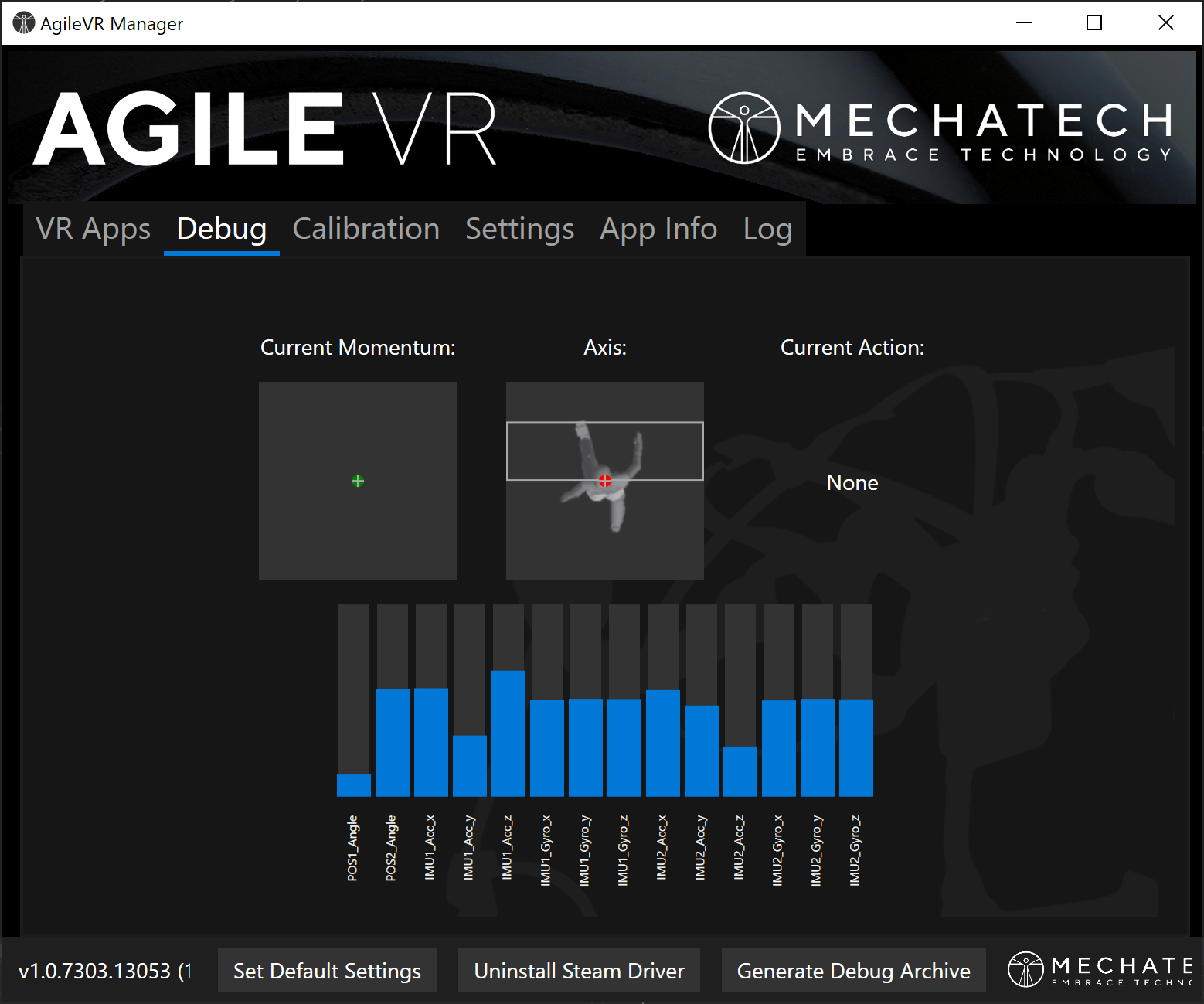
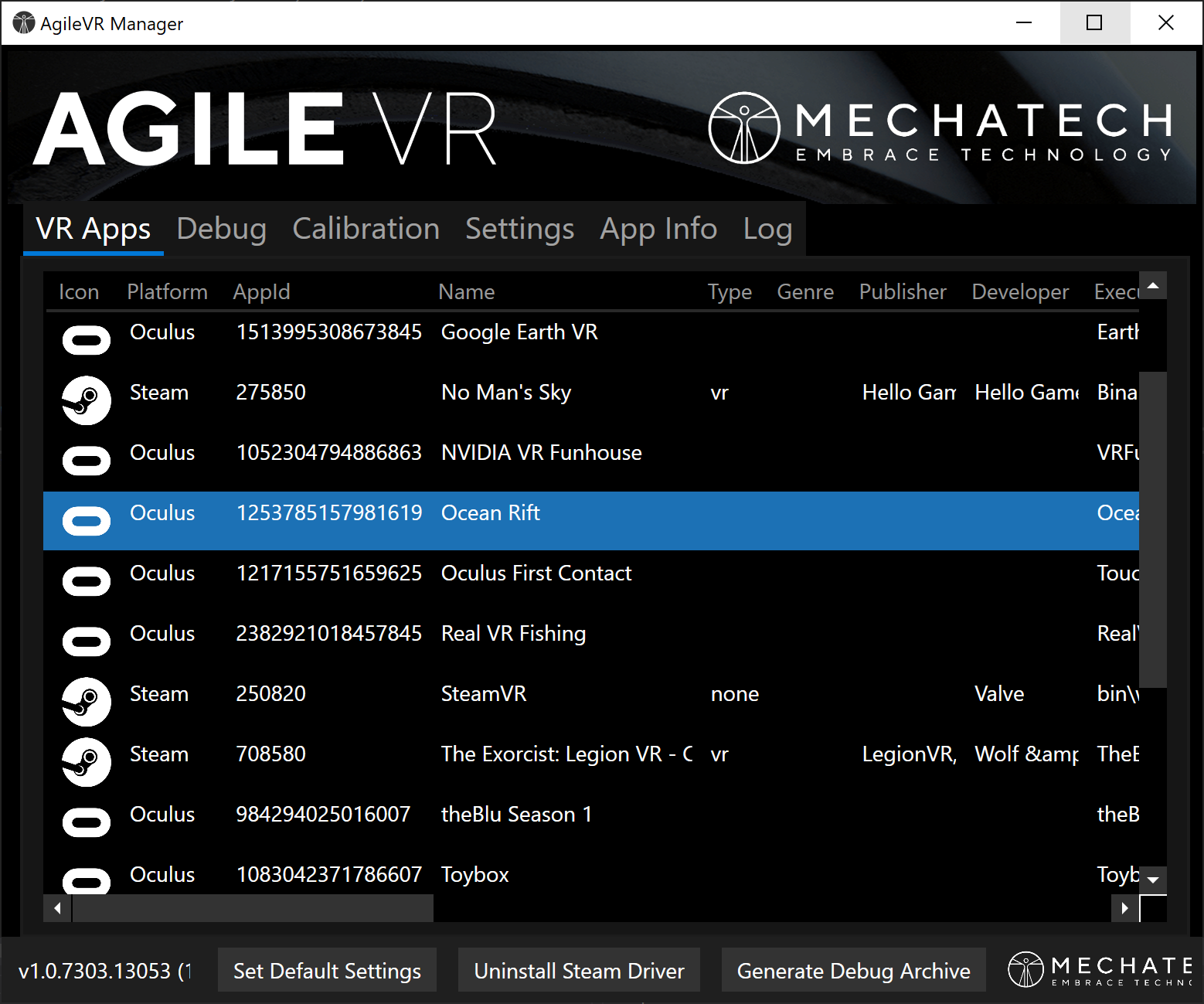
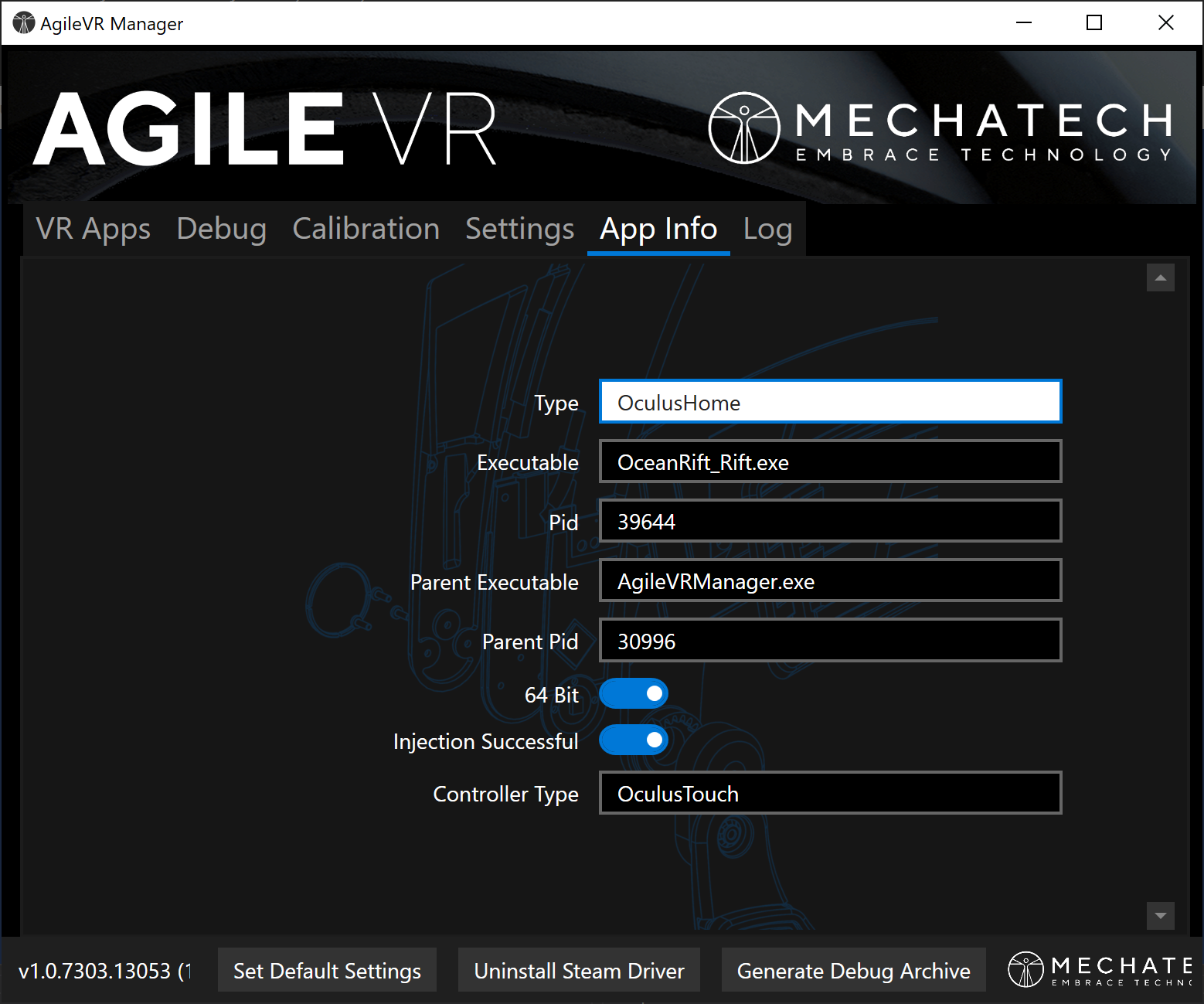
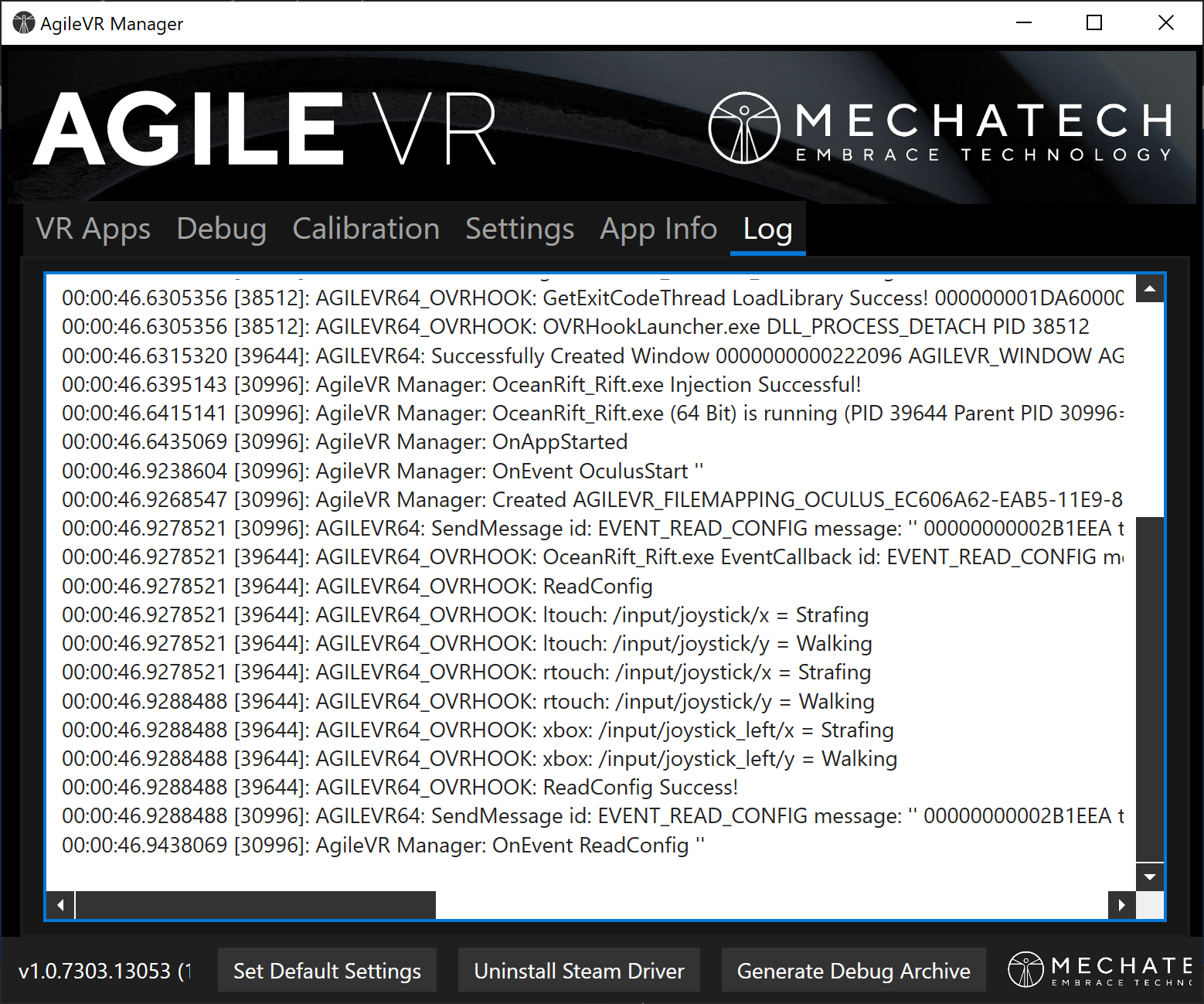
Hey Microchip I think I found a backdoor in your BM70/71 firmware!
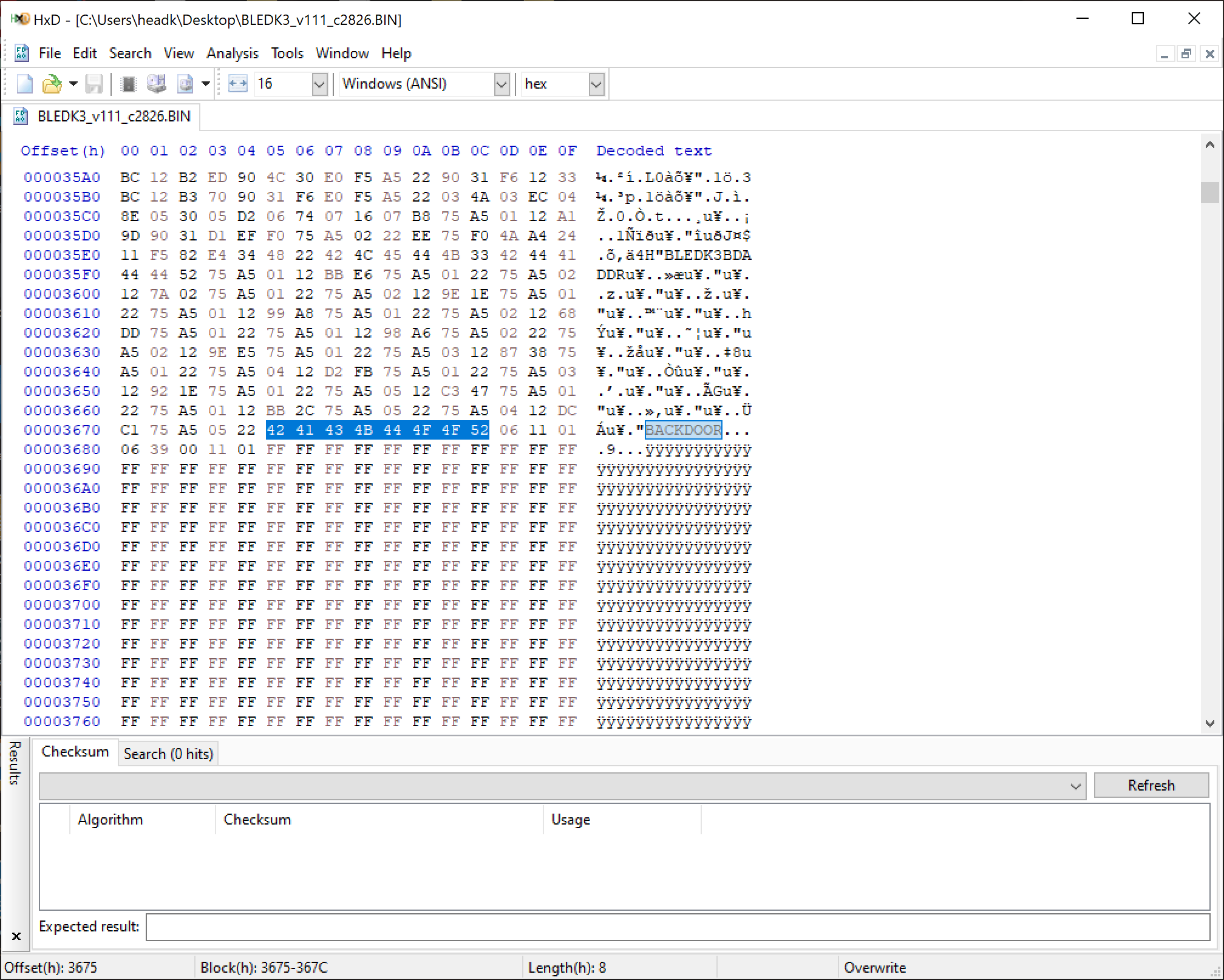
Disclaimer: Do this at your OWN RISK! I will not be held responsible for anyone bricking their machine!
I made the mods based on @Lost_N_BIOS's post here and by following the How-2-Rip-It-Open-Yourself guide here.
This patch has been confirmed to work with both 15X v8 and 15W v8 models. Make sure you have your Aero's BIOS flashed to version FB0A using the official release on the Gigabyte website here before attempting the following.
First you must run command prompt (as Administrator) and run "FPTw.exe -bios -d biosreg.bin". You can get FPTw.exe from Intel CSME System Tools v12 r18 (located in the "Flash Programming Tool" folder).
Next you will need to run UEFITool 0.26.0 and open biosreg.bin. Select File->Search... Text tab and enter AMITSE. A list of search results will show at the bottom. Double click on "Unicode text "AMITSE" found in User interface section at offset 0h". Right click on the "PE32 image section" and select "Replace as is...". Browse to the (unzipped) file attached (Section_PE32_image_AMITSE_AMITSE.zip). File->Save image file... and call it biosmod.bin.
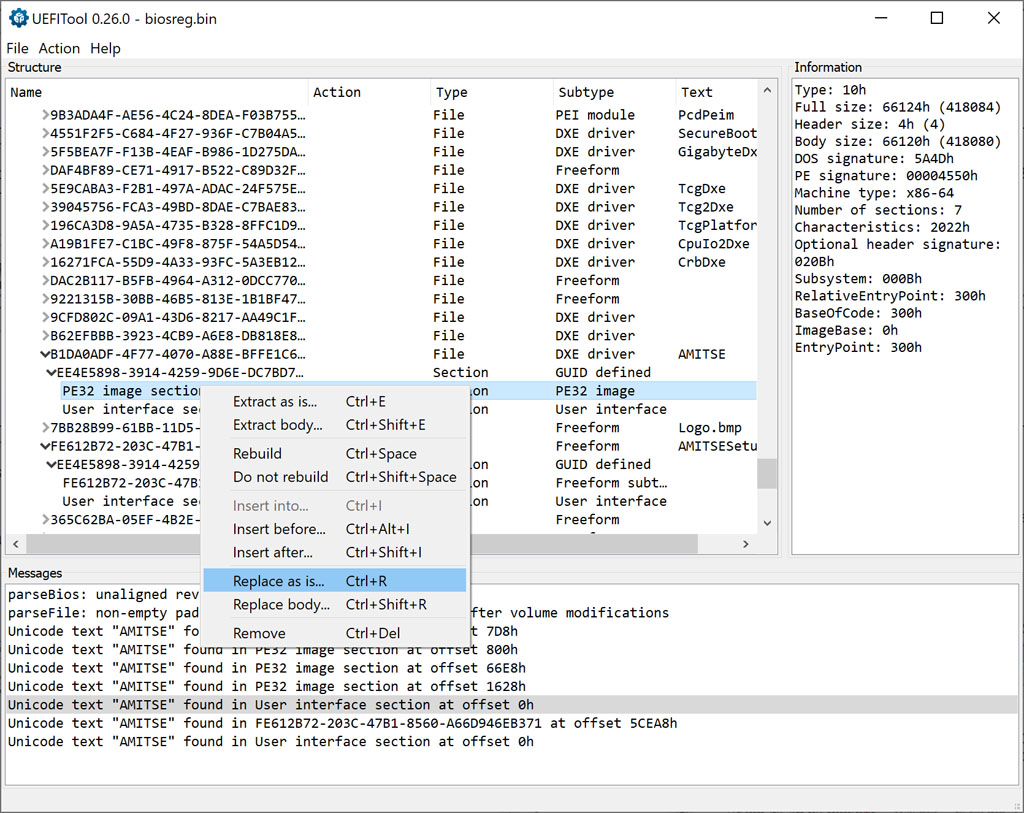
Then you need to run AMIBCP 5.02.0031 and open biosmod.bin to set the menu access to USER like so:
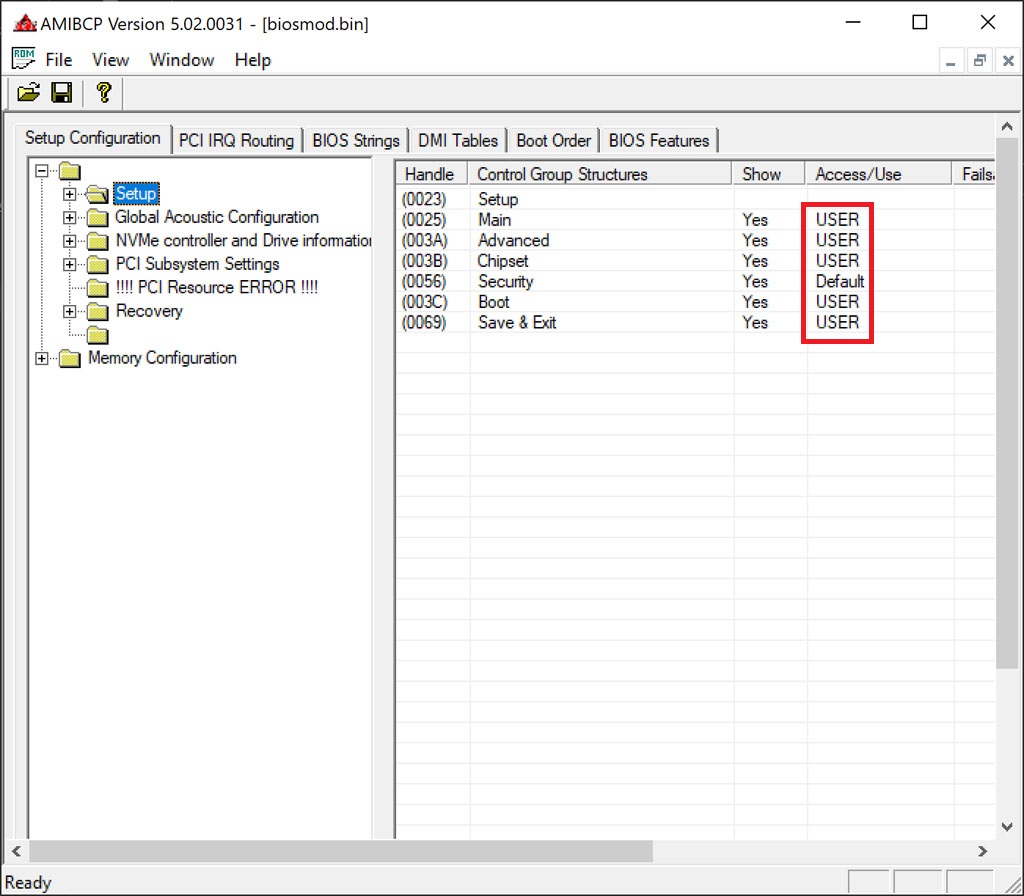
Once you File->Save run "FPTw.exe -bios -f biosmod.bin".
If you get the following error:
Quote:Error 167: Protected Range Registers are currently set by BIOS, preventing flash access.
This is caused by the BIOS Lock variable set to 0x01 (Enabled):
Code:
BIOS Lock, VarStoreInfo (VarOffset/VarName): 0xA12
How to set the BIOS Lock variable to 0x00 (Disabled):
Attempt to write the modified BIOS again using FPTw.exe.
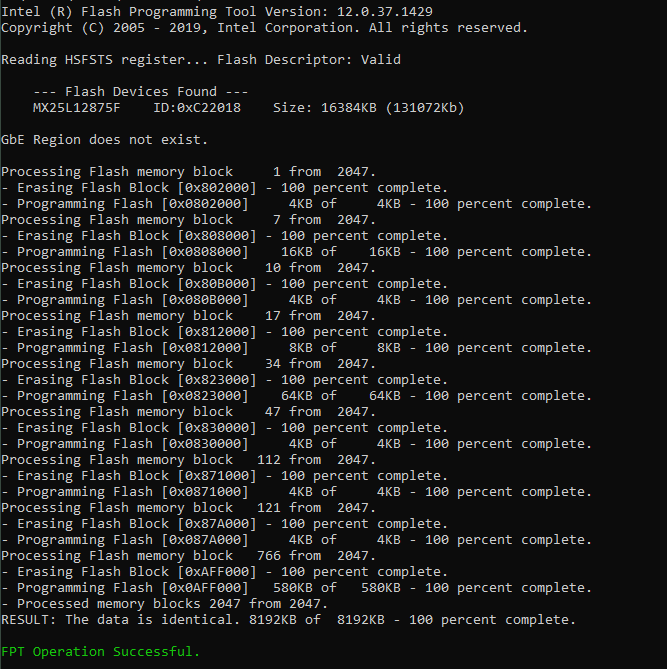
If successful this time run "FPTw.exe -greset" to reboot.
Press F2 to enter BIOS you should (hopefully) be greeted with some extra menus...
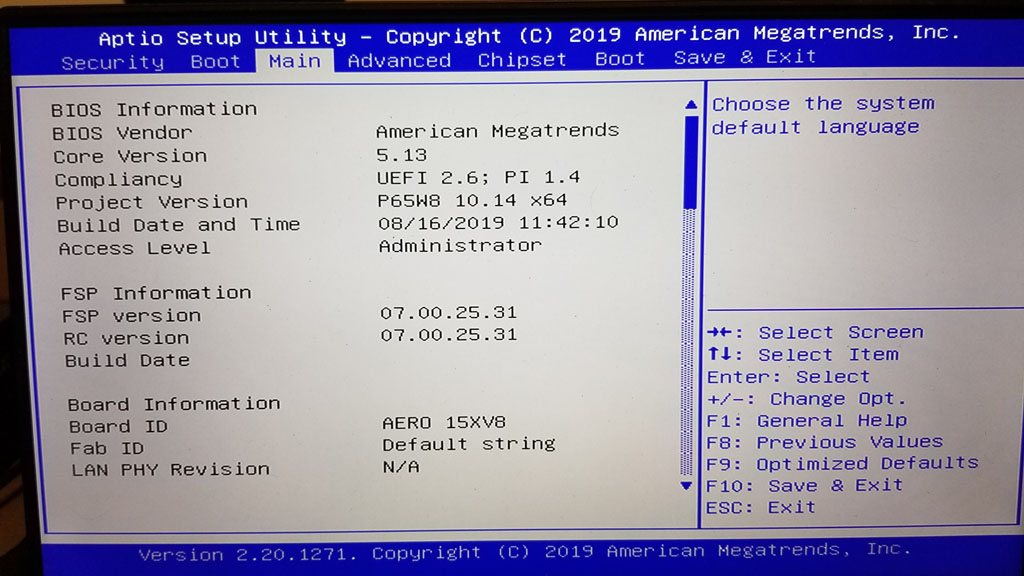
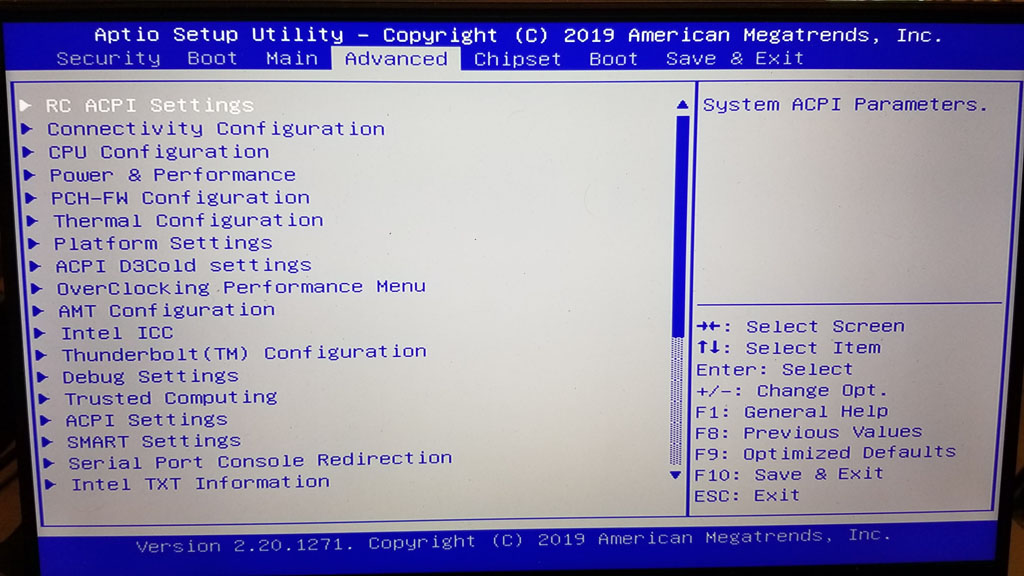
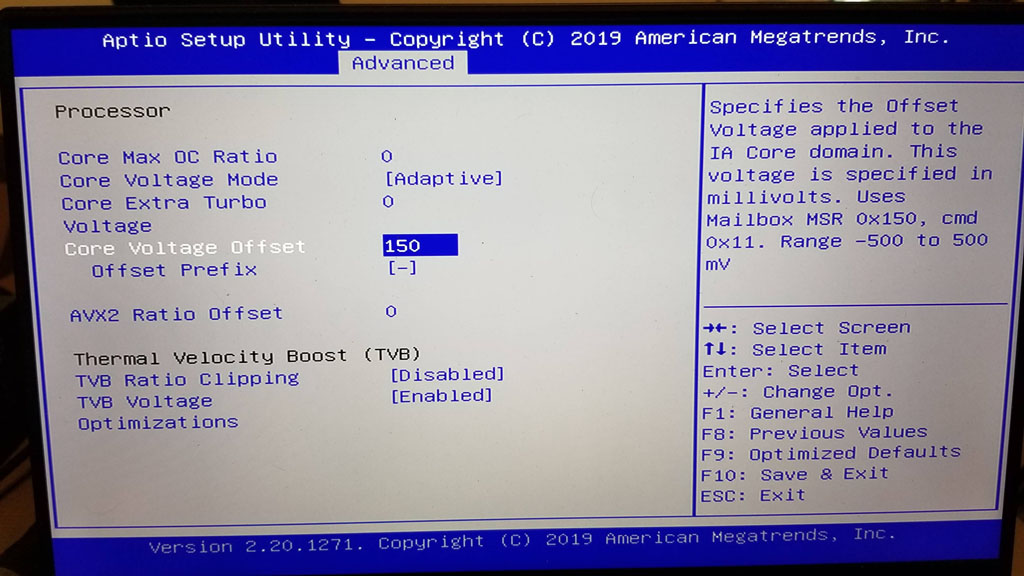
Big thanks to @Lost_N_BIOS!
Menu bar software for macOS 64-bit to support ActionStar chip based KVM hardware.
Vendor ID 0x2101 / 0x0835 is ActionStar (www.actionstar.com.tw)
2101:1403, 2101:1404, 2101:1406, 2101:1407, 2101:1411, 0835:1403, 0835:1404, 0835:1406, 0835:1407, 0835:1411
I'm just going to run through some of the changes I made to RehabMan's BrcmPatchRAM project for it to function in macOS Catalina. I don't really have time to go any further with it but hopefully my research and testing can help get an official working version out.
I'm using BrcmFirmwareData.kext, BrcmPatchRAM2.kext and BrcmBluetoothInjector.kext and place them inside EFI/CLOVER/kexts/Other
BrcmBluetoothInjector.kext was not required on previous macOS releases but is on Catalina because of the following missing IOCatalogue methods:
kxld[com.no-one.BrcmPatchRAM2]: The following symbols are unresolved for this kext:
kxld[com.no-one.BrcmPatchRAM2]: IOCatalogue::addDrivers(OSArray*, bool)
kxld[com.no-one.BrcmPatchRAM2]: IOCatalogue::removeDrivers(OSDictionary*, bool)
kxld[com.no-one.BrcmPatchRAM2]: IOCatalogue::startMatching(OSDictionary*)Since these methods are no longer available they must be removed from the project. The easiest way to do this is to comment out publishPersonality() and publishResourcePersonality() methods from BrcmPatchRAM.cpp / BrcmPatchRAM.h. Also remove all calls to these methods in BrcmPatchRAM.cpp.
The next issue is dealing with the 0xe00002c2 error when reading and writing to the BRCM hardware. Starting with BrcmPatchRAM::continuousRead() and BrcmPatchRAM::readCompletion() we need to add an kIODirectionIn option.
ie.
mReadBuffer = IOBufferMemoryDescriptor::inTaskWithOptions(kernel_task, kIODirectionIn, 0x200);
IOReturn result = mReadBuffer->prepare(kIODirectionIn);
IOReturn result = me->mReadBuffer->complete(kIODirectionIn);
Next in BrcmPatchRAM::bulkWrite we need to add kIODirectionOut options.
if (IOMemoryDescriptor* buffer = IOMemoryDescriptor::withAddress((void*)data, length, kIODirectionOut))
if ((result = buffer->prepare(kIODirectionOut)) == kIOReturnSuccess)
if ((result = buffer->complete(kIODirectionOut)) != kIOReturnSuccess)
Now that we don't have IOCatalogue::addDrivers, IOCatalogue::removeDrivers and IOCatalogue::startMatching methods to switch from using the uploader driver to native macOS driver we have to use BrcmBluetoothInjector.kext instead.
So my Bluetooth device is a BCM20702A0 with VendorID 0x0A5C and ProductID 0x216F (Dell DW1560 4352+20702 M.2) located in internal USB port HS14. So I'll use it as an example for the following modifications.
In BrcmPatchRAM2-Info.plist we need the following entry. Note the addition of the IOProbeScore. When the kext is loaded it will call BrcmPatchRAM::probe which will update the firmware and return NULL and then the BrcmBluetoothInjector.kext should load instead.
<key>0a5c_216f</key>
<dict>
<key>CFBundleIdentifier</key>
<string>com.no-one.$(PRODUCT_NAME:rfc1034identifier)</string>
<key>DisplayName</key>
<string>DW1560 Bluetooth 4.0 LE</string>
<key>FirmwareKey</key>
<string>BCM20702A1_001.002.014.1443.1572_v5668</string>
<key>IOClass</key>
<string>BrcmPatchRAM2</string>
<key>IOMatchCategory</key>
<string>BrcmPatchRAM2</string>
<key>IOProviderClass</key>
<string>IOUSBHostDevice</string>
<key>IOProbeScore</key>
<integer>4000</integer>
<key>idProduct</key>
<integer>8559</integer>
<key>idVendor</key>
<integer>2652</integer>
</dict>In BrcmBluetoothInjector-Info.plist we need the following entry. Note again the addition of the IOProbeScore. We want the BrcmBluetoothInjector.kext to load the macOS kext after the firmware has been uploaded to the hardware. Since BrcmBluetoothInjector.kext has not been updated in a long time you may need to add your hardware manually to the plist. Note that your Bluetooth device VendorID / ProductID is not the same as your WiFi hardware and will not show up in your PCI list. You will need to look at the USB ports to get this info.
<key>0a5c_216f</key>
<dict>
<key>CFBundleIdentifier</key>
<string>com.apple.iokit.BroadcomBluetoothHostControllerUSBTransport</string>
<key>IOClass</key>
<string>BroadcomBluetoothHostControllerUSBTransport</string>
<key>IOProviderClass</key>
<string>IOUSBHostDevice</string>
<key>IOProbeScore</key>
<integer>3000</integer>
<key>idProduct</key>
<integer>8559</integer>
<key>idVendor</key>
<integer>2652</integer>
</dict>You will know the firmware is uploaded when its version in About This Mac->System Report...->Bluetooth shows something like:
Firmware Version: v14 c5668
If it shows 4096 then the upload has failed.
I will attach my compiled versions for people to help test. I'm not 100% sure if this is method is going to work so I'd appreciate feedback on it.
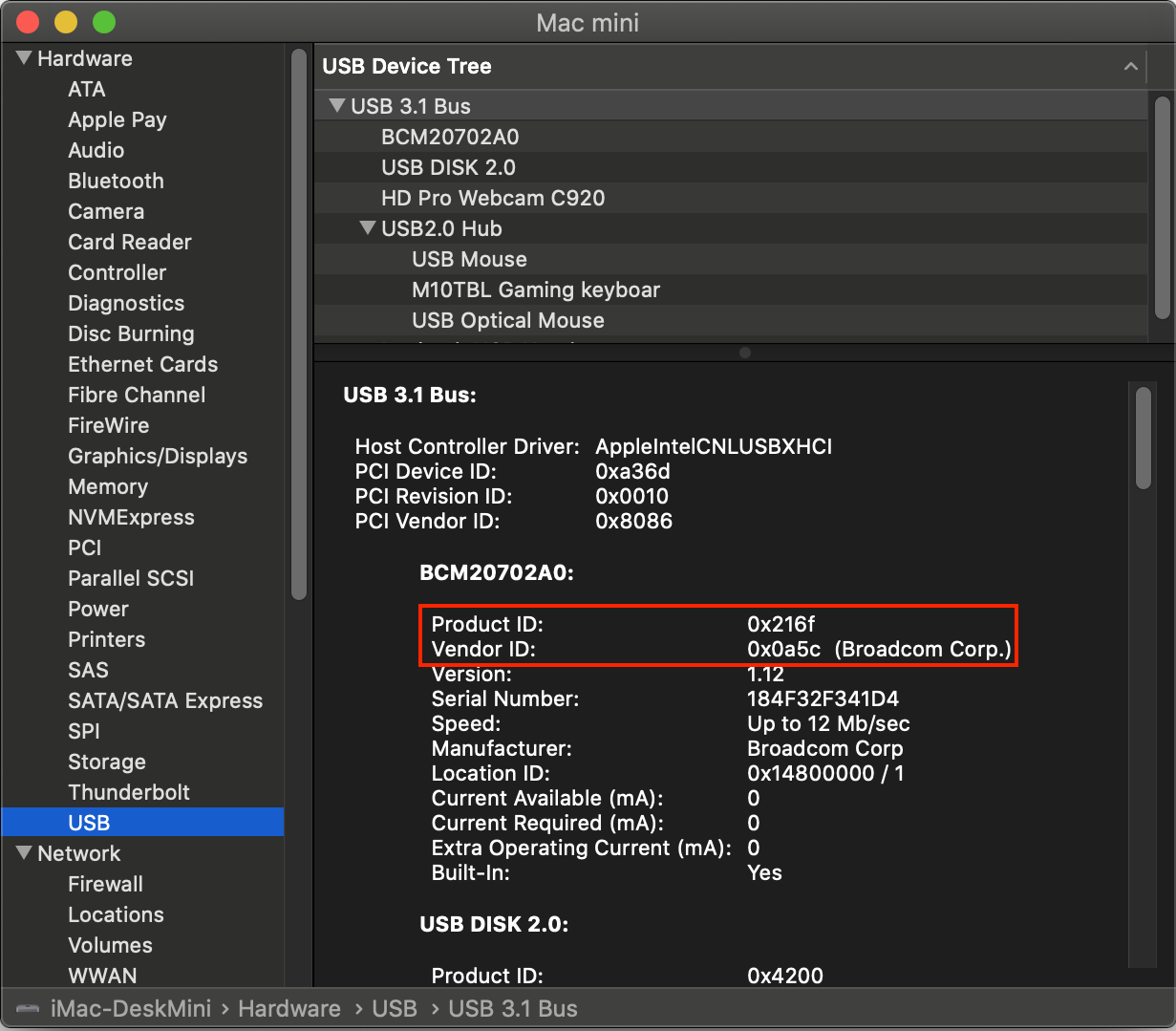

What do you guys think of the default themes?
